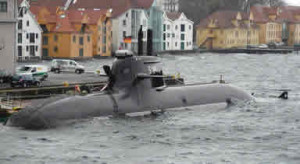
The military submarine market is expected to continue growing in a modest pace through the second decade of the 21st century, as naval forces are inducting modern, more capable submarines, designed for extended operational missions at sea. Along with the growth of the submarine fleets, there is a growing interest in combat systems, sensors, defense systems countermeasures, as well as the means for integrating submarines with surface and joint operations, the ‘ICD global submarine market report 2011-2012‘ indicated.
Submarines form an essential core of today’s naval fleets as a result of their flexible mission capabilities and ability to complement other strategic resources. Worldwide, 41 countries possess submarine capability and together operate 450 submarines. Most of these nations are modernizing their fleets or increasing them as a result of changing security situations. A total of 155 submarines are to be procured over the forecast period, costing US$188.8 billion.
North America is set to constitute 46.27% of the global submarine market during the forecast period, followed by Europe with 24.48%, Asia with 24.35% and Latin America at 4.55%. With the dramatic growth of major Asian fleets, Asia-Pacific is expected to significantly impact the submarine market throughout this decade. The rise of regional powers with ambitions for power projection coupled with a growing sense of hostility and a resulting arms race in Asia-Pacific is driving the submarine market. The need to replace a Soviet era submarine fleet, rising maritime threats such as piracy, transnational terrorism and growing demands to protect sea lanes and communication lines are also important factors behind the desire for a strong submarine capability.

Submarines by CategoryBy categories, 102 conventional Submarine Hunter Killer types (also called attack submarines – SSK), 37 nuclear-powered attack submarines (SSN) and 16 Nuclear powered Ballistic Missile carrying Submarines (SSBN) are to be built across the globe over the forecast period. Major markets for SSKs include Brazil, India, Turkey and Vietnam, which have planned procurements in place. The SSN market is dominated by the US, which is planning to buy 21 SSN’s across the forecast period. A total of 16 SSBNs are planned to be procured during the forecast period at a value of US$57.1 billion, which includes the cost of R&D of the US SSBN (X) and the UK’s SSBN (R) programs.
Evolving technology and changing mission profiles
The improvements in underwater sensor and propulsion technologies have resulted in extended underwater endurance, as in the case of diesel electric submarines through the aid of an Air Independent Propulsion system. This has broadened the operational scope of today’s submarines, extending its mission profile to include enhanced ISR operations and Special Forces insertion and extraction. Developments in sensor and stealth technology have resulted in the boats undertaking covert operations near enemy territory and in littorals with near impunity to enemy sensors.
Navies Opt for Improved Capabilities to Cope with Force Reduction, Budget Cuts
The reduction in defense budgets in the Western world combined with changes in the global strategic security situation and the advent of sophisticated technology has brought about an immense change to the submarine market. Rising economic powers such as China, Brazil and India and their neighbors will increase expenditure on acquiring submarines and on developing the necessary submarine industrial base. The overall reduction in submarine orders in the West have forced the industry to reinvent the production process, turning to modular production processes and cutting down on manufacturing cost and time. The increasing cost of technology development and its rapidly changing nature has driven the submarine industrial base to adapt to modular and flexible systems architecture, which has long term benefits such as ease of upgrade installation and through life support. It also helps to easily switch between various mission profiles by swapping modules. Varying mission profiles has in turn resulted in the adaptation of a flexible payload to effectively deal with varying threats.
Shifts in submarine procurement patterns to stimulate collaboration and consolidation
The above factors have led to increasing collaboration amongst the submarine industrial base (SIB) present within a country. The decrease in demand in the West, which has a matured SIB, and the increasing demand from the rest of the world, which has limited industrial capability but stable financial growth, has resulted in cross border consolidation. The political will and limited restrictions in transferring sensitive technology have also led to growing license production through technology transfer agreements, a trend that is expected to increase during the forecast period.
For more information on “The Global Submarine Market 2011-2021″ (product # Defense-update DF0002SR Request for Quotation). The report is available in electronic form from ICD. Single User License costs: $4,800.-
To order this report and request more information please Contact Customer Support

















